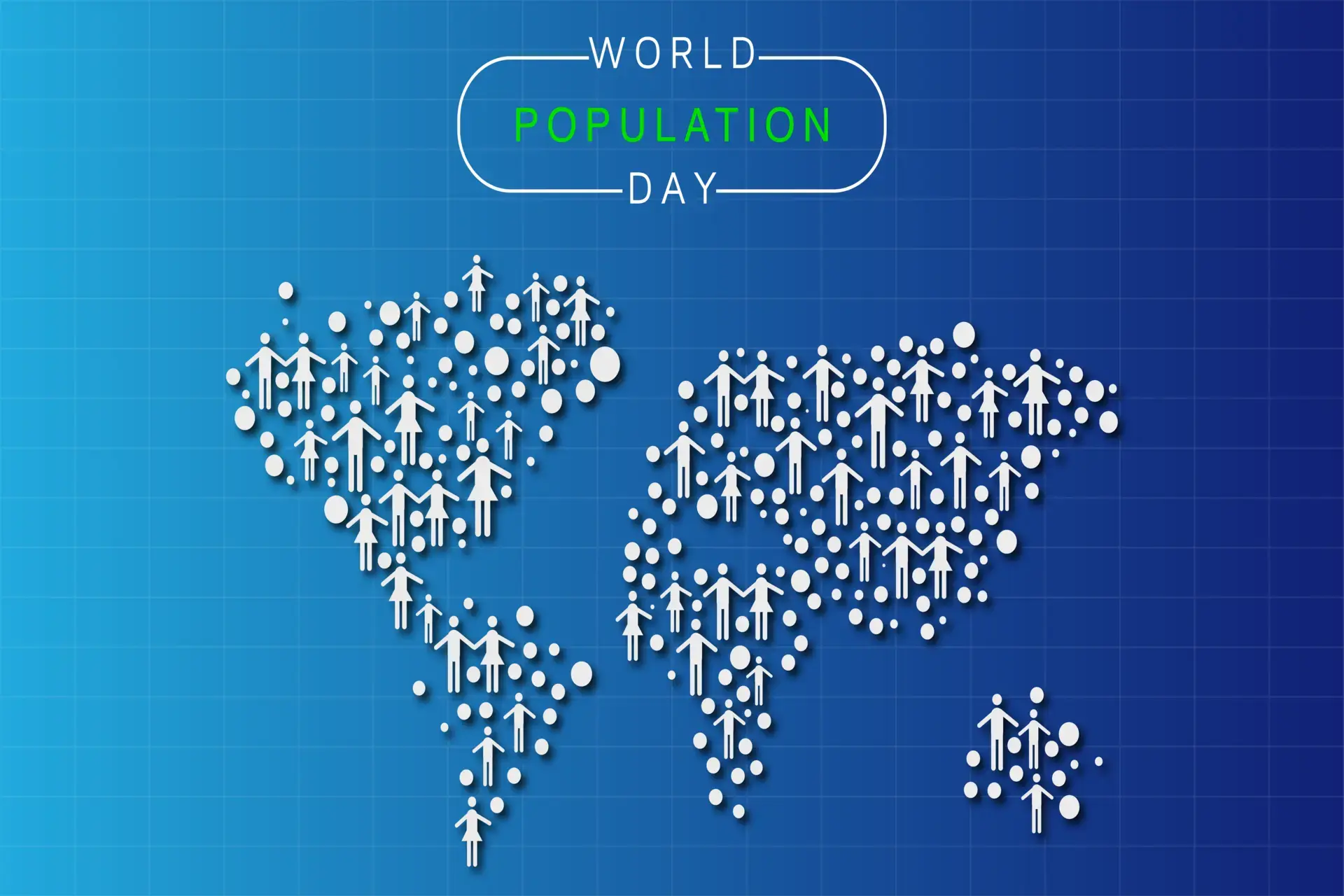Transforming Fashion: Navigating 2024's Challenges with Innovation and Resilience
In the dynamic nexus of technology and fashion, an unprecedented revolution is unfolding, reshaping how we perceive, acquire, and engage with fashion. The democratization of style, powered by technological advancements, has opened fashion doors to a global audience no longer confined to the elite precincts of designers. With these changes comes a broad range of questions related to materials used and processed in the industry or even how brands leverage AI in the evolution of e-commerce?
What are some of the complexities businesses face when navigating emerging markets in e-commerce? Labels and high-end boutiques, fashion today embraces a universal platform where e-commerce and social media reign supreme. This technological renaissance has not only made fashion accessible but has also fostered a breeding ground for innovation, sustainability, and a redefined consumer experience that champions both personalization and ethical consciousness.
The Impact of Technology on Fashion
The Democratization of Style
The advent of social media and e-commerce has shattered the traditional barriers to fashion, heralding an era where style is no longer the prerogative of a select few. This digital renaissance has catalyzed a more inclusive fashion landscape where diverse voices contribute to the ever-evolving tapestry of global style. Influencers and bloggers, leveraging the power of social platforms, now dictate trends and champion sustainable and ethical fashion movements, underscoring a shift towards more conscious consumption.
Sustainability and Innovation
The foundation of any successful marketing strategy is the establishment of clear, measurable objectives that are directly aligned with the startup's overarching business goals. For AI startups, these objectives range from lead generation and customer acquisition to brand awareness and user engagement. Setting these goals requires a deep understanding of the startup's value proposition, target market, and the unique challenges and opportunities AI presents.
The Rise of AI and Data-Driven Fashion
Data analytics and AI are revolutionizing fashion by providing insights into consumer behavior, enabling brands to tailor their offerings to meet the market's ever-changing demands.
Real-time data analysis allows for agile responses to trends, as seen in fast fashion's rapid production cycles. Moreover, personalized recommendations powered by machine learning enhance the shopping experience, making it more tailored and engaging for consumers.
In 2023, several fashion brands emerged as frontrunners in harnessing the power of artificial intelligence (AI) to revolutionize various aspects of their operations. From personalized shopping experiences to supply chain optimization, these brands demonstrated innovative applications of AI technology. One notable example is Burberry, which leveraged AI-powered algorithms to analyze customer data and tailor product recommendations, enhancing the overall shopping journey. Additionally, Adidas utilized AI to streamline its manufacturing processes, resulting in more efficient production and reduced lead times. Another standout performer was Farfetch, which integrated AI into its platform to offer customers personalized styling suggestions based on their preferences and browsing history. These brands exemplified how AI can be effectively employed to drive growth, improve efficiency, and deliver unparalleled customer experiences in the ever-evolving landscape of the fashion industry.
Technology's integration into fashion has transformed the industry's infrastructure and redefined the essence of style, sustainability, and consumer interaction. Through democratization, innovation, and data-driven strategies, technology continues to weave a new narrative in fashion, promising a future where fashion is not only accessible and sustainable but also deeply personalized and conscious. As we look ahead, the symbiotic relationship between technology and fashion is poised to further evolve, shaping the contours of the industry in ways yet to be imagined.
Transforming E-commerce with Technology
Personalization and AI
The fusion of AI with e-commerce has revolutionized the shopping experience by enabling unparalleled personalization. AI tailors product recommendations and marketing strategies by analyzing individual behavior and preferences, making consumer engagements more effective and personalized. This shift indicates e-commerce is evolving from a one-size-fits-all approach to offering curated experiences that resonate with each consumer's unique tastes and needs.
Global E-commerce Dynamics
E-commerce's global landscape is marked by its rapid adaptation to digital transformation, emphasizing the importance of understanding and leveraging regional growth variations. Emerging markets, characterized by their unique consumer behaviors and preferences, present fertile ground for growth. Businesses are thus compelled to embrace digital tools and strategies to navigate the complexities of these markets effectively, ensuring they can tap into the vast potential these regions offer.
Evolution of Digitalization in E-commerce
Digitalization has significantly reduced geographical or linguistic barriers, making it easier for consumers to find and verify products. With innovations like advanced payment services, effective marketing through social media, and a 24/7 sales presence facilitated by mobile connectivity, e-commerce platforms have become more accessible and efficient. These advancements have enhanced the customer experience and streamlined operations, from supply chain management to data handling and demand forecasting. Anticipatory shipping, digital supply chain optimization, and personalized marketing efforts are examples of how digitalization sets new benchmarks in the e-commerce industry.
By leveraging digital technology, e-commerce is simplifying shopping and redefining it, making it more personal, accessible, and efficient. The ongoing digital transformation is thus a critical driver in the evolution of e-commerce, promising even more innovative and customer-centric advancements.
The Influence of Technology on Consumer Behavior
Enhanced Connectivity and Expectations
Technology has revolutionized consumer behavior, fostering a world where consumers are more connected and informed. With the advent of smartphones and social media, individuals can easily research products, engage with brands, and make purchases on the go. This shift has elevated consumer expectations, demanding more responsive, relevant, and personalized interactions from companies. Brands that adapt quickly to these demands thrive, while those that lag face dwindling market relevance.
Multi-Device Engagement
The proliferation of smartphones, tablets, and wearables has led to a multi-device consumer journey. Shoppers often start their buying process on one device and complete it on another, expecting a seamless platform transition. This behavior underscores the importance of an omnichannel strategy, where personalized experiences are delivered consistently across all devices and channels.
Rising Bar for Customer Experience
Today's consumers compare their shopping experiences not just among direct competitors but also with digital pioneers like Amazon and Netflix. They expect immediate, tailored engagement at every touchpoint. Please meet these expectations to avoid lost sales and brand abandonment. Businesses must leverage tools like marketing automation software and AI-powered chatbots to provide the high-quality, on-demand experiences that consumers expect.
Preparing for the Future
As technology continues to evolve at an accelerating pace, companies must stay ahead of the curve by identifying and capitalizing on emerging trends. With advancements like IoT and 5G on the horizon, businesses must adapt swiftly to remain competitive and retain their market share. The influence of technology on consumer behavior is a powerful driver of change, pushing companies to innovate continuously to meet and exceed consumer expectations.
Consumer Shifts and Preferences
The evolution in consumer priorities towards travel and outdoor activities drives lifestyle brands to innovative heights. Embracing this trend, companies are developing products and services that support an active, outdoor lifestyle, leveraging technology to enhance functionality and user experience. Brands are integrating intelligent technologies into outdoor gear and creating travel-friendly products, aiming to merge convenience with adventure, reflecting the modern consumer's desire for experiences that combine the thrill of exploration with the comforts of technology.
The Role of Authenticity and Influence
The shift towards authenticity reshapes the influence landscape, with consumers valuing genuine, relatable content over traditional advertising. Social media platforms have become pivotal in this change, enabling influencers to share their experiences with products and lifestyles. This authenticity drives deeper connections and trust between consumers and brands, prompting companies to adopt more transparent, authentic marketing strategies. Influencers who embody the brands' values and lifestyles play a crucial role in shaping consumer perceptions and preferences, underlining the importance of authenticity in the digital age.
Challenges and Considerations
Navigating through 2024, the fashion industry faces multifaceted challenges, including economic and geopolitical uncertainties, pressing environmental concerns, and the need for digital transformation. Collaboration and resilience are essential as brands and manufacturers adjust to fluctuating demands and prepare for a resurgence in consumer interest. Generative AI emerges as a transformative tool, enhancing design creativity and fostering operational efficiency and compliance with burgeoning regulatory standards. The industry's pivot towards sustainability and ethical practices reflects a response to regulatory pressures and consumer expectations, underscoring the critical role of technology in facilitating transparency, compliance, and innovation. As the industry adapts to these challenges, embracing technological advancements and collaborative strategies becomes pivotal in steering toward a sustainable and compliant future.
Economic and Geopolitical Uncertainties
The fashion industry faces considerable challenges from geopolitical instability, economic volatility, and inflation. In 2023, the fashion landscape was marred by climate disasters, geopolitical unrest, and financial uncertainties, which disrupted the fashion supply chain and subdued consumer confidence. According to a McKinsey report, 62% of CEOs in the fashion industry cited geopolitical uncertainty as the main risk to growth, followed by economic volatility (55%) and inflation (51%). Although expected to fall to 5.8% from 6.9% in 2023, the average global inflation rate remains historically high, contributing to consumer apprehension.
Adaptability and Resilience
Amid such uncertainties, adaptability, and resilience are imperative for fashion businesses. The upheavals of 2023 underscored the need for more extraordinary collaborative efforts and resilient partnerships between manufacturers and brands. For instance, the bullwhip effect witnessed in 2023 magnified demand fluctuations, leading to reduced production capacities and factory closures. To cope with fluctuating demands better, brands can encourage transparency and communication within their supply chains, pursue longer-term contracts, and invest in digital technologies for joint demand forecasting practices. This collaborative approach enhances resilience and positions businesses to quickly scale up production to meet resurging demand.
Sustainability and Ethical Imperatives
Sustainability remains a critical challenge for the fashion industry in 2024. With the fashion industry contributing 8-10% of global carbon emissions, businesses must prioritize sustainable practices to mitigate environmental impact. Consumers increasingly demand transparency and accountability from brands, with two-thirds of global customers willing to pay more for sustainable items. Brands can address this challenge by adopting transparent supply chains, prioritizing quality over quantity, embracing innovative sustainable materials, and leveraging virtual fitting technologies to reduce textile waste and carbon emissions. Fostering ethical practices, such as fair labor standards and safe working conditions, throughout the supply chain is essential for building consumer trust and promoting responsible consumption.
Technological Integration and Innovation
Technology remains a key driver of change in the fashion industry, offering opportunities for innovation and efficiency. Generative AI, for example, is poised to revolutionize product design and optimize sustainability drives. According to McKinsey, 73% of fashion executives prioritize generative AI for their businesses in 2024. Beyond creativity, Generative AI can facilitate greater collaboration, transparency, and sustainability across the value chain. Furthermore, digital solutions such as Product Lifecycle Management (PLM) systems enable companies to streamline product development, enforce compliance, and monitor modifications throughout a product's lifecycle. Embracing these technological advancements enhances operational efficiency and supports sustainability goals and regulatory compliance.
Said, the fashion industry faces many challenges in 2024, ranging from economic volatility and geopolitical unrest to sustainability concerns and technological disruption. However, amidst these uncertainties lie opportunities for growth and innovation. Recent reports suggest that the key to navigating this tumultuous landscape lies in adaptability, resilience, and collaboration.
Despite the challenges, the fashion industry continues to evolve, driven by technological advancements and changing consumer behaviors. Generative AI, virtual fitting technologies, and Product Lifecycle Management (PLM) systems are reshaping how brands design, produce, and market their products. Moreover, e-commerce platforms and digital solutions provide new avenues for reaching consumers and optimizing supply chain operations.
Looking ahead, we can expect technology to play an increasingly integral role in shaping the future of fashion, e-commerce, and lifestyle. As businesses strive to address sustainability concerns, meet regulatory requirements, and cater to evolving consumer preferences, technological innovation will remain a driving force for transformation. By embracing these changes and leveraging emerging opportunities, the fashion industry can continue to thrive in an ever-evolving global landscape.
Are you ready to take your fashion business to the next level? Partner with Coditude to build a cutting-edge e-commerce platform to revolutionize your brand's online presence. With our expertise in web development and digital solutions, we'll create a tailor-made platform that enhances user experience, drives sales, and sets you apart from the competition.












